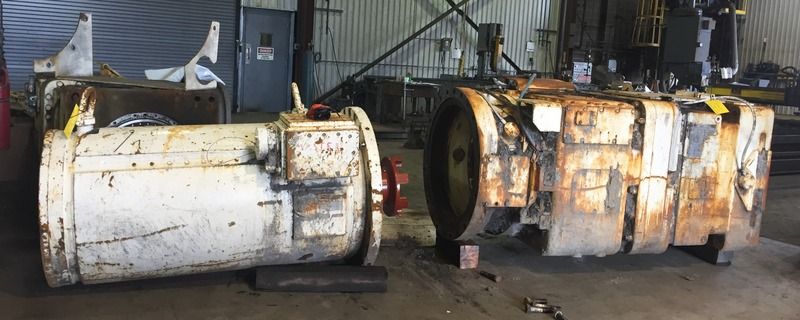It's hard to say what the difference between those two conditions is that's causing the problem, but two things stand out to me: First, a tap-switching conditioner is not a great fit for coping with brief transient power quality problems and it can't do anything about the sagging frequency from the generator which might mess with the starter's operation.
Agreed. It was more of a low-cost proof-of-concept. Still, it did prevent the soft starter from going into fault during pump start, and even once allowed the pump to fully start and run on generator power only.
A UPS would be much better even if it's not double-conversion. As soon as the generator's output gets a little bit wonky, the UPS will switch to battery and the starter should run smoothly. The changeover happens at least as fast as the tap-switching on your conditioner.
There are a number of reasons why I'm resistant to using a UPS. Perhaps the foremost reason is its reliance on a battery which may have a short life in that environment.
Second, the generator's controller settings seem to be contributing to the problem here. It needs to not be shutting itself down due to motor starting transients. Either the regulator needs to be adjusted so it doesn't produce a voltage surge when a sudden load is applied, or the controller needs to be adjusted to tolerate a higher voltage surge without shutting down the unit.
In early tests of the generator, it was shutting down due to exceeding max current. After first consulting with Leroy-Somer (manufacture of the alternator), I was assured that no damage would occur to the genset if the max amperage setting was increased. So I did so. I'm far more hesitant to raise the max voltage setting for fear of damaging electronics in the the control panel for the pumps or our two soft starters.
I still believe that one of the problems is the phase imbalance. It seems that as the genset is trying to deliver the extra current demand on the one leg, it's over-generating on the other two legs which might explain the over-voltage condition.
You have proven absolutely that the generator is capable of starting the motor. The problem is strictly a controls issue. That generator can be made to run these pumps.
Yes, it can be made to start the pump. But it's right on the edge and not very confidence-inspiring. When we previously rented a generator during the storm blackout, it was a 70kW unit. That genset didn't hesitate in the least when starting our pumps (and at that time, our #1 pump's shaft was binding in the bearings and very stiff to turn, which is why we had to send it back to the factory for overhaul).
VFDs are finicky and can create problems, but so can electronic soft-starters... Like the problems your existing one seems to be causing you. A VFD isn't much worse. In this case it would probably fix more problems than it causes. There's no guarantee that whatever specific VFD you choose will play nicely with the generator's poor power quality, but they tend to be pretty tolerant of bad power sources. Many are rated for 50-60Hz input (great for a generator since the frequency is unstable) and wide line voltage ranges. Some will even run with a missing phase! The variable speed would be nice and you could even rig a float switch (or multiple float switches at different levels) to lower the pump speed as the reservoir level drops and raise the speed when the water is higher. The 30HP pump with no VFD provides some assurance that you can still move water even if the electronics fail.
Actually, I was hoping to replace the
very old 16" pump (30HP) with a new one and put that on a VFD to be able to reduce flow in low water conditions. A smaller, less powerful pump (and with a deeper intake) running on extended cycle times would work better than trying to throttle back the 18" pump (40HP). Perhaps a VFD for both?


